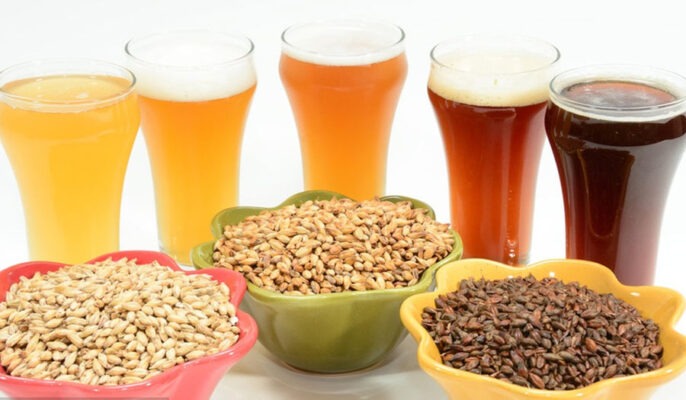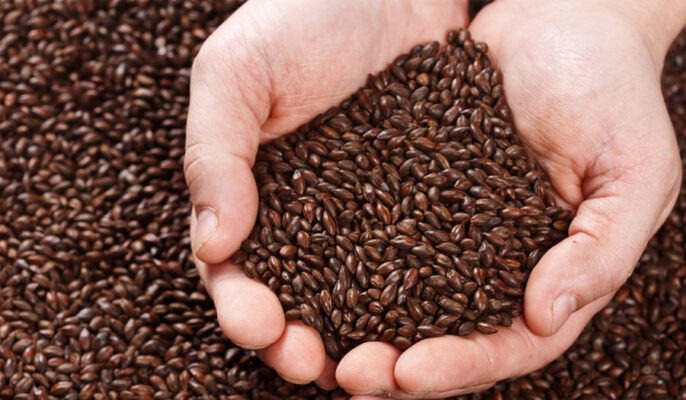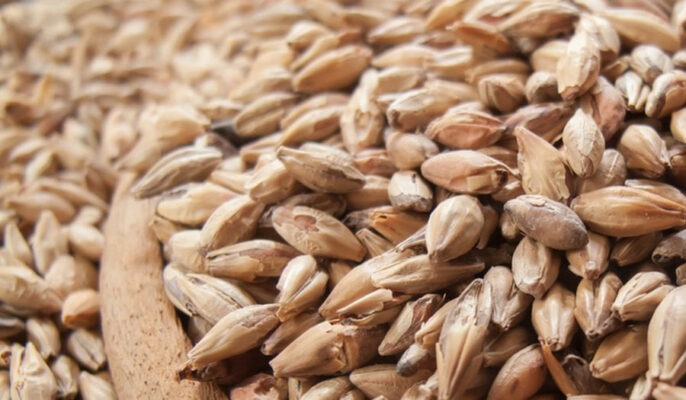Slad je jednou z nejdůležitějších složek piva a má na chuť piva větší vliv než kterákoli jiná složka. Při vaření piva se sladem rozumí určitý druh odrůdy sladovnického ječmene. Typ sladu vybraný pro vaření piva určuje výslednou barvu, chuť, říz, tělo a aroma.
Co je to slad?
Slad je obilí, které bylo přeměněno na cukr. Kvasinky spotřebovávají cukr na výrobu alkoholu, což je proces, který se nazývá fermentace. Z obilí se stává slad a ze sladu pivo.
Pivovary mají k dispozici širokou škálu sladů. Všechny slady se dělí do dvou velkých kategorií: slady, které lze namáčet (vhodné pro vaření extraktu), a slady, které je třeba rmutovat (nutné pro vaření celozrnného piva).

Doplňkové obilí
Příměsi jsou nesladované škrobnaté látky (často se jimi rozumí obilí, ale domácí pivovarníci používají i látky jako dýně a brambory).
- Vločkový ječmen a ovesné vločky
- Kukuřice
- Pšenice
- Dýně
- Brambory
- Měřiče
- Jako doplněk lze použít jakoukoli škrobovou zeleninu/obilovinu.
The adjunct does not contain sugar like crystal malt, so it cannot be steeped for extract brewing. They also don’t contain enzymes like malted grains do, so need to be mashed with the base malt to extract the sugar.
Základní slad
Většinu sladu v celozrnném pivu tvoří slad základní. Mezi názvy založené na odrůdě, místě pěstování nebo jinak patří:
- Ječný slad: světlý slad, plzeňský slad, vídeňský slad, mnichovský slad, jemný pivovarský slad atd.
- Slady jiné než ječné, například pšeničný a žitný slad.
- Slad z vysoké pece: Díky svým jedinečným vlastnostem je hlavním zdrojem tmavých sladových ležáků v Evropě. Mnichovský a vídeňský slad jsou toho nejlepším příkladem.
- Americké základní slady jsou obvykle jemné a neutrální. Anglická sladová whiskey je sladovější, chlebovější a sušenkovější.
Výroba sladu
V prvním kroku se zrno namáčí ve vodě, dokud nenabere normální hmotnost nebo dokud se neobjeví radikuly. Zrno se přemístí do místnosti s řízenou teplotou a otočí se . Posledním krokem je sušení: zrno se umístí do sušárny, kde se odstraní vlhkost.
Zjednodušeně řečeno, sladování je řízený proces klíčení zrna, který přeruší přirozený proces a chemickou přeměnu, k níž v zrnu dochází. Slad pomáhá zejména uvolňovat specifické enzymy, které snižují složitost škrobu a rozkládají ho na jednodušší cukry, které jsou pak během vaření piva metabolizovány kvasinkami.
V závislosti na teplotě sušení, technice použité v této fázi atd. lze získat různé slady s různými vlastnostmi.
Slad přispívá k senzorickému profilu piva a různé druhy sladu mají na aromatický profil různý vliv. Obecně můžeme rozlišovat základní slady a speciální slady.


Speciální slad
K základnímu sladu pivovary často přidávají také speciální slady na fermentační bázi. Ty dodávají pivu jedinečný organoleptický charakter nebo se používají k vaření určitých pivních stylů.
Můžeme identifikovat některé speciální slady:
- Karamelové slady: Tyto karamely se vyrábějí bez sušení zrna po sladování a vystavení vysokému teplu po přeměně škrobu na cukr. Hlavními druhy této kategorie jsou sladové whisky Carapis, Caravienna, Caramonaco, Crystal a Special B.
- Nekaramelizované slady: Slady, které neprošly procesem karamelizace, si ponechávají část škrobu, který se může přeměnit na cukr. Mezi hlavní nekaramelizované speciální slady patří aromatické, žitné a hnědé slady.
- Pražený slad: Slad je vystaven vysokým teplotám až 250 °C. Obvykle se používají ve velmi malém množství, které stačí k určení barvy a chuti piva. Hlavními druhy jsou čokoládový slad, tmavý slad, pražený slad a loupaný slad.
Křišťálový slad
Crystal malt can be steeped and is often used in extracts and whole grain beers to add sweetness and color. In general, lighter colored crystal malts are more “sweet”, while darker crystal malts add a roasty or nutty flavor also to sweetness.
Na nejlehčím konci jsou dextrinové slady. Pro bohatou chuť a vydatný pocit v ústech se přidává také dextrin.




